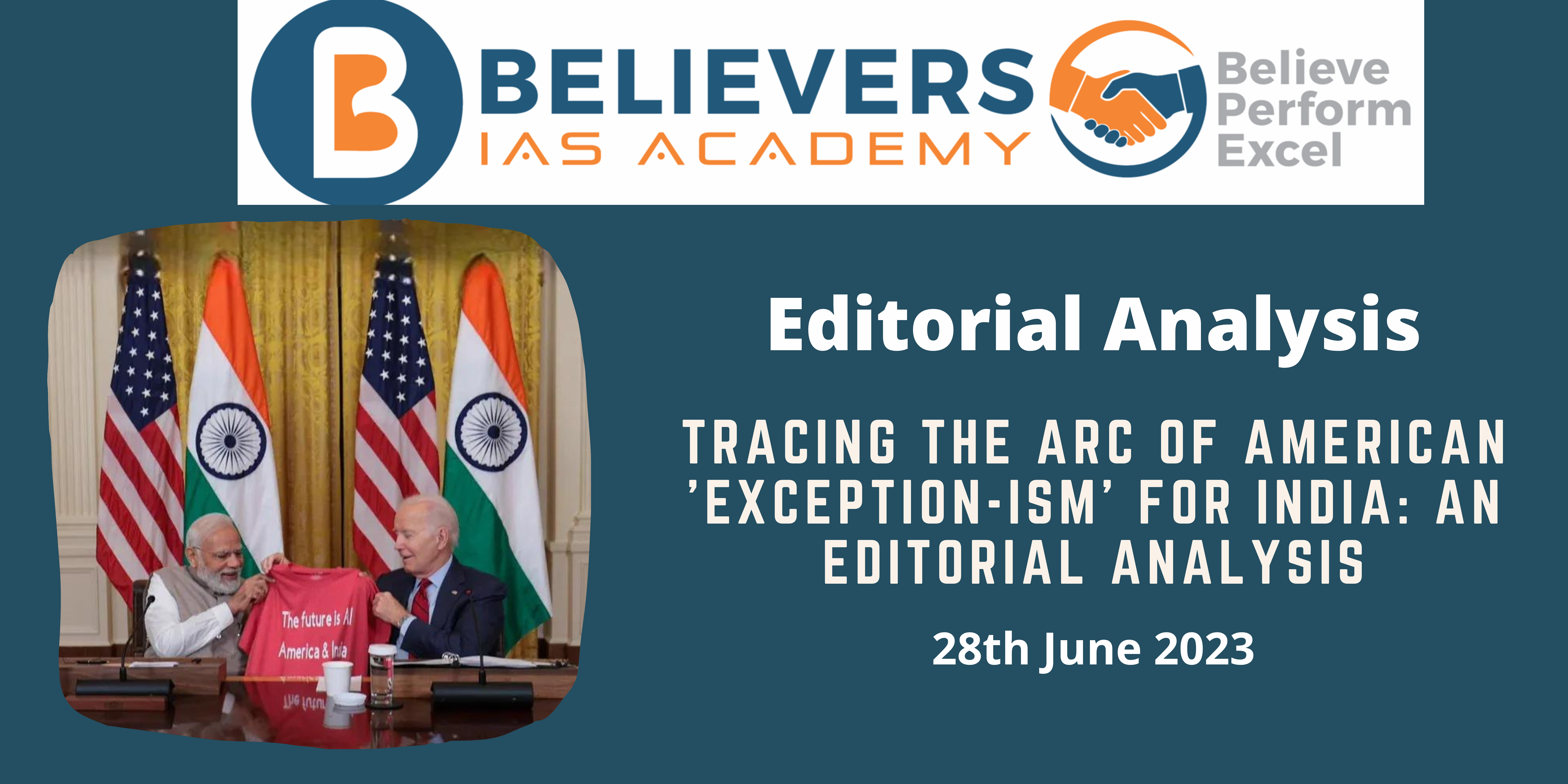Tracing the Arc of American ‘Exception-ism’ for India: An Editorial Analysis
Context:
The recent state visit of Prime Minister Modi to Washington and his meetings with President Biden have further propelled the two nations towards an era of technology diplomacy, marked by promising collaborations in defense production.
Relevance:
GS-02 (Bilateral relations)
Mains Questions:
Analyze the significance of the exceptions made by the United States for India in strengthening their bilateral relationship, considering India’s non-alignment policy and its ties with Russia and Iran. (250 words)
Dimensions of the article:
- The Civil Nuclear Deal
- The Russian Angle
- International Religious Freedom Act Exemptions
The Civil Nuclear Deal:
- The U.S. made exceptions for India in terms of civil nuclear cooperation, despite India’s non-membership in the Nuclear Non-Proliferation Treaty (NPT) and Comprehensive Nuclear-Test-Ban Treaty. These India-specific waivers, not extended to other non-NPT countries like Pakistan, marked a significant shift in U.S. alignment in South Asia.
- The exemptions granted under various acts and agreements facilitated high technology trade and transfers, making India an exception in the global nuclear landscape.
The Russian Angle:
- The U.S. has also exhibited flexibility in dealing with India’s engagements with Russia. Despite imposing sanctions on other countries, such as Turkey and China, for their purchases of the Russian S-400 missile system, the U.S. has avoided penalizing India.
- The U.S. House of Representatives passed an amendment that could exempt India entirely from sanctions under the Countering America’s Adversaries Through Sanctions Act (CAATSA). This exceptional treatment regarding Russia-related matters highlights the complexities and nuances in the U.S.-India relationship.
International Religious Freedom Act Exemptions:
- India has received exemptions from the International Religious Freedom Act, despite recommendations to include it on the list of “Countries of Particular Concern.” This divergence from the recommendations of the U.S. Commission on International Religious Freedom demonstrates the exceptional considerations accorded to India.
- These exceptions have been granted without India committing to sever ties with its adversaries or aligning with U.S. military operations against them, highlighting the independent foreign policy pursued by India.
Way Forward:
- The exceptional waivers and exceptions extended to India have contributed significantly to the growth of the bilateral relationship. However, relying heavily on exceptions poses challenges to maintaining a steady trajectory. Former close partners of the U.S., such as Pakistan, Egypt, Turkey, Saudi Arabia, and even China, have experienced the fickleness of American foreign policy. Therefore, both India and the U.S. should strive for a more balanced partnership, characterized by reciprocal cooperation and respect for each other’s strategic autonomy.
Conclusion:
- The arc of the India-U.S. relationship has been shaped by exceptional waivers and exceptions granted by the U.S., which have elevated the partnership to new heights. However, the sustainability of this trajectory depends on transitioning from a transactional approach to a relationship based on mutual respect and shared objectives. India’s attractiveness as a democratic, populous nation, an economic market, and a military buyer, combined with its geographic significance, makes it a potential dependable partner for the U.S.
- Going forward, both nations must navigate the complexities and challenges while leveraging the opportunities to forge a lasting and meaningful relationship. Only by transforming exceptions into a broader framework of cooperation can the India-U.S. relationship truly reach its potential as a defining partnership of the century.




